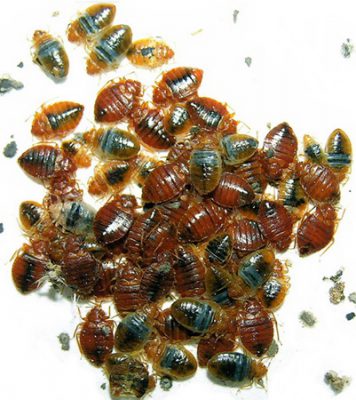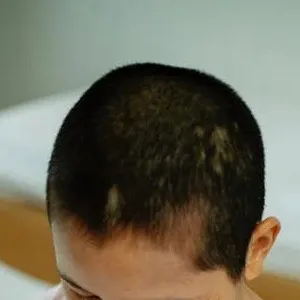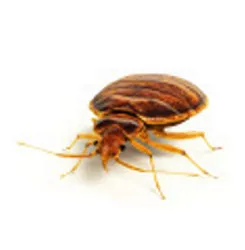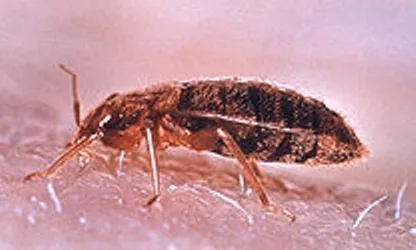
Hairy Bed Bugs
 Hairy Bed Bugs - Billy The Exterminator Steaming Bed Bugs In Florida - A&E - Billy Bretherton - All Rights Reserved
Hairy Bed Bugs - Billy The Exterminator Steaming Bed Bugs In Florida - A&E - Billy Bretherton - All Rights ReservedI've been researching and writing about the little bloodsuckers ever since my own hairy bed bugs experience in an infested West Hollywood hotel room,
I barely escaped with all of my blood still intact.
Unfortunately, bed bugs are an increasing problem which experts have labelled as epidemic.
Famed A&E's Billy The Exterminator had an entire episode (before the series ended), dedicated to battling a major bed bug infestation in Florida.
The episode was creepy, but also very realistic and informative.
Billy used scalding hot steamers to kill the bugs which had exploded throughout the rooms. Eradicating bed bugs is an ongoing process not normally cleared with just one treatment.
Misinformation has exploded as a result of the rising bed bug population.
Luckily the U.S. Environmental Protection Agency (EPA) has been busy putting together helpful facts about Integrated Pest Management (IPM), Non-Chemical Treatments and even Pesticide Treatment Alerts.
Hairy Bed Bugs Attacking Human Hair And Scalp
 Hairy Bed Bugs - Billy The Exterminator - A&E - Billy Bretherton - Takes on the biggest pests & wildest animals of the Great White North.
Hairy Bed Bugs - Billy The Exterminator - A&E - Billy Bretherton - Takes on the biggest pests & wildest animals of the Great White North.Over the years I've received emails from people who were bitten on their scalps, along their hairline and in the roots of their hair.
NBC Dateline consulted with Dini M. Miller, Ph.D., an associate professor in Urban Pest Management at Virginia Tech's Department of Entomology.
Dr. Miller explained how bed bugs can make their way into hairy areas of the body.
The truth? They really don't navigate as easily on areas with dense strands.
Unlike fleas or lice who have bodies or claws specifically designed for navigating through human hair, bed bugs don't have these abilities.
Bed bugs need to strategically position their front claws so they can strategically insert their mouth parts into the skin. This is necessary in order for the bugs to be in the proper feeding position.
Hair can make feeding extremely difficult for the little blood suckers.
While bed bugs prefer to feed on hairless bare skin, if they're hungry enough, or the swarm is large enough, they'll manage to bite the scalp, hairline and all the way along the strands.
 Hairy Bed Bugs - Billy The Exterminator - A&E - Billy Bretherton - Takes on the biggest pests & wildest animals of the Great White North.
Hairy Bed Bugs - Billy The Exterminator - A&E - Billy Bretherton - Takes on the biggest pests & wildest animals of the Great White North.Most people report bites on their face or some other less hairy areas.
Others have reported bed bugs biting inside the hair.
If you're bald or suffer from thinning hair, it's even more likely they'll bite you on the scalp, face, hairline and along the borderline of any hairy body parts.
When you enter a bed bug infested zone, none of your body parts will be safe.
Hair or no hair, bed bugs won't be stopped once they've detected juicy bite zones.
Products To Protect Hair And Scalp From Hairy Bed Bug Bites
The EPA strongly suggests use of Integrated Pest Management (IPM).
It's an effective and environmentally sensitive approach to pest management. It relies upon a combination of common-sense practices.
This includes taking precautions against getting bitten by proper bug infestation as well as identification and management.
The EPA is concerned that any use of pesticides be as safe as possible. They want products which do the least possible damage to people, property, animals and the environment.
For more information review Non-Chemical Treatments and even Pesticide Treatment Alerts.
Hairy Bed Bug Pesticide Alert
Many people are concerned about the growing bed bug problems. They question whether new pesticides will be made available to the public to fight the battle. There is news of companies currently developing new bed bug pesticides.
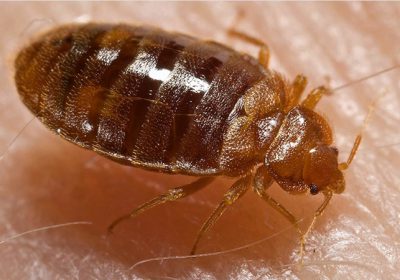 Hairy Bed Bugs - CDC/ Harvard University, Dr. Gary Alpert; Dr. Harold Harlan; Richard Pollack. Photo Credit: Piotr Naskrecki via Wikimedia Commons
Hairy Bed Bugs - CDC/ Harvard University, Dr. Gary Alpert; Dr. Harold Harlan; Richard Pollack. Photo Credit: Piotr Naskrecki via Wikimedia CommonsAll pesticides, including those for managing bed bugs which are labeled for use in the United States, must be registered by the EPA.
In order to receive EPA registration, a pesticide product has to be thoroughly tested.
Any pesticides have to be examined for acute and chronic effects on mammals. This includes laboratory rats and dogs.
It also includes the potential effects on birds, fish and honeybees.
The environmental fate (half-life) of the products in water or soil must be quantified.
Achieving EPA product registration costs an estimated $100 million. The high cost makes it extremely difficult for new pesticide products to make it into the marketplace.
There's been a 10 to 15 year trend in the reduction of the number of pesticides receiving registration for use indoors. Indoor pesticide approval is different than pesticides for agricultural use.
Members of the EPA are not the only people concerned with indoor use of toxic pesticides.
A large number of onsumers have serious concerns about using pesticides or similar chemicals where children, pets or chronically ill people sleep and/or play.
EPA Warnings About Hair Bed Bugs
The EPA has their own warnings about using pesticides indoors to combat bedbugs.
Listed below are the EPA pesticide warnings:
- Never use a pesticide indoors which is intended for outdoor use. It's very dangerous and won’t solve bed bug problems.
- Using the wrong pesticide, or using it incorrectly can make you sick. It may not solve the problem. It could even make it worse by causing the bed bugs to hide where the pesticide won’t reach.
- Check if the product being proposed for use is effective against bedbugs. If bed bugs aren't listed on the product label, the pesticide hasn't been tested on them. It may not be effective.
- Avoid product use inside a home if bed bug treatment are not specifically named on the product label.
- Never allow a pest control operator to treat your home without first reviewing the documentation about the product.
- Before using any pesticide product, read the label first. Carefully follow the exact directions for use.
- Keep in mind that any pesticide product without an EPA registration number has not been reviewed by EPA. This means the EPA hasn't determined how well the product works.
Summary - Hairy Bed Bugs
Since my own hairy bed bugs encounter with an infested hotel room in West Hollywood, I've been researching and writing about the little bloodsuckers.
The rise in bed bugs in the developed world may have been caused by increased international travel and resistance to insecticides. They may also may be flourishing due to the use of new pest-control methods which don't kill bed bugs.
If bed bugs should become as big a problem as they were at the beginning of the 20th century, the public may demand the federal government accelerate the registration of pesticide products which are effective against bed bugs.
For more information about bed bugs or EPA guidelines for management, control and elimination visitSocial Media Network Information
Please follow us on Twitter at: https://Twitter.com/HairBoutique. I look forward to meeting new people from all walks of Twitter and learning from their Tweets.


